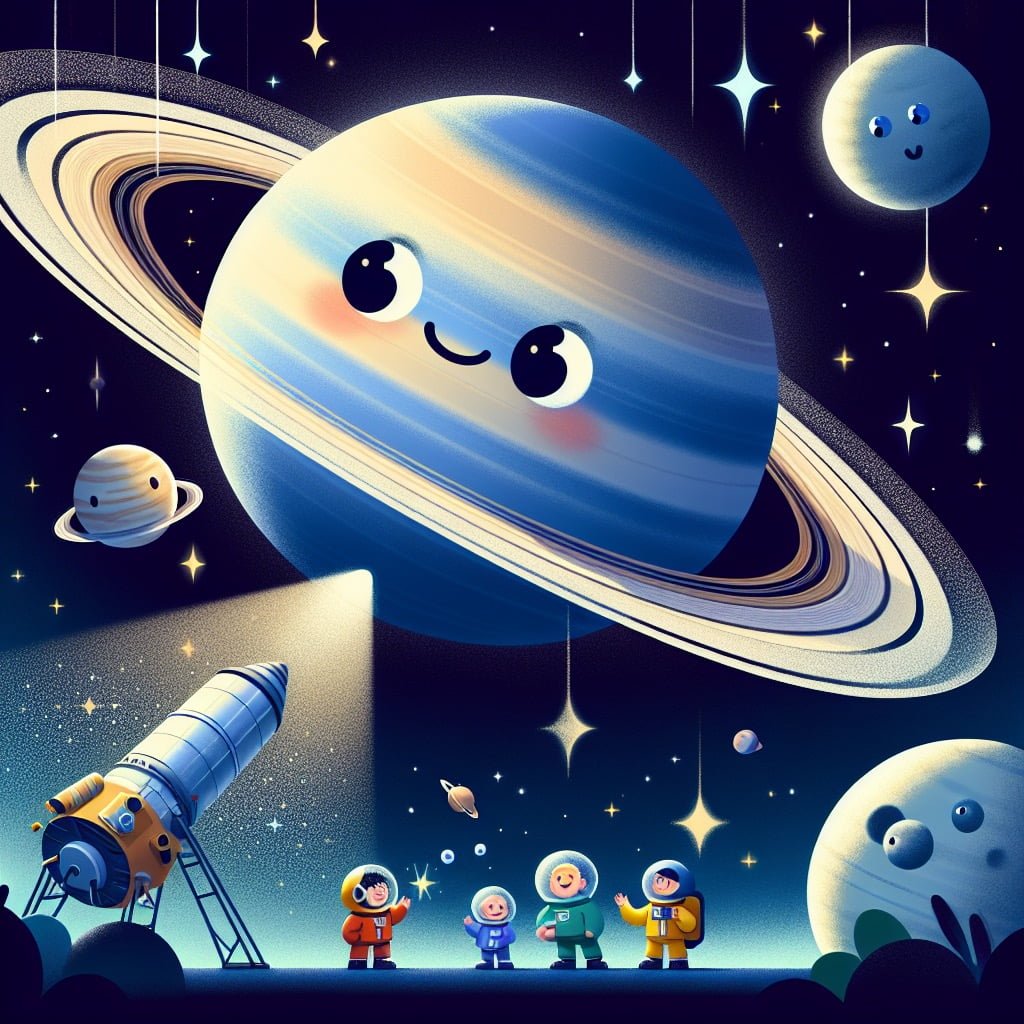Discover the wonders of Uranus, one of the most fascinating planets in our Solar System. From its sideways spin to its diamond-raining atmosphere, there’s so much to learn about this icy blue world. Let’s dive into some fun and amazing Uranus facts for kids!
Structure and Surface
Uranus is what scientists call an “ice giant,” which means it’s made mostly of icy materials like water, methane, and ammonia. These swirl above a small rocky core, creating an extraordinary structure that’s different from gas giants like Jupiter and Saturn.
- It has a thick atmosphere made of methane, hydrogen, and helium, which makes it unlike Earth or Venus.

- The planet’s blue-green color comes from methane in the atmosphere, which absorbs red light and reflects shades of blue and green.

- Uranus is surrounded by 13 rings! The inner rings are dark and narrow, while the outer rings are brighter and easier to spot.

- One of the coolest things about Uranus? It spins on its side! Scientists think a massive collision with a planet-sized object billions of years ago caused Uranus to tilt. This makes Uranus the only planet in the Solar System with such an extreme axial tilt.

These Uranus facts for kids show just how strange and exciting this icy world really is.
Time on Uranus
Uranus has some of the most extreme time-related facts in the Solar System:
- A day on Uranus is super short—just 17 hours and 14 minutes long! That’s how long it takes Uranus to rotate on its axis.
- A year on Uranus lasts an incredible 84 Earth years. If you lived on Uranus, you’d only celebrate a birthday every 84 years! Its long orbit around the Sun is due to its vast distance from it.
These Uranus facts for kids make it easy to see why time works differently on this faraway planet.
Uranus’ Neighbours
Uranus is the seventh planet from the Sun, making it one of the outermost planets in the Solar System. It sits between Saturn and Neptune, forming part of the icy giant duo with Neptune.
- Uranus has 27 moons, each named after characters from Shakespeare’s plays and Alexander Pope’s poetry.

- Some of its most famous moons include Titania, Oberon, and Miranda.Its position far from the Sun makes Uranus incredibly cold and mysterious, which adds to its allure when learning Uranus facts for kids!
Quick History
The history of Uranus is as fascinating as the planet itself:
- Uranus was discovered in 1781 by the astronomer William Herschel, making it the first planet found using a telescope. At first, Herschel thought it was a comet or star!
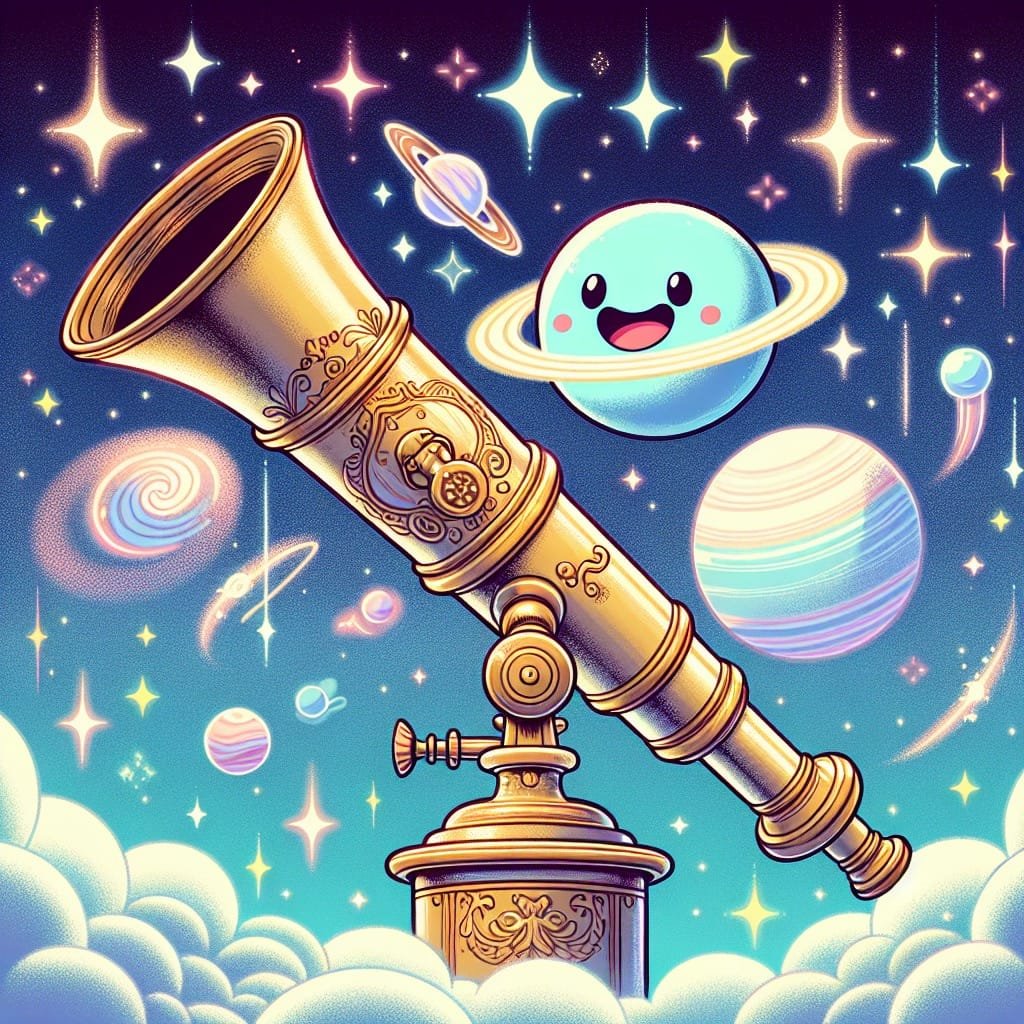
- Since then, Uranus has only been visited by one spacecraft: Voyager 2, which flew by the planet in 1986. This mission provided stunning images and key data about Uranus’ rings, moons, and atmosphere.
These historical Uranus facts for kids highlight its importance in astronomy and space exploration.
What Does Uranus Look Like?
Uranus stands out in the Solar System with its smooth, blue-green appearance.
- This stunning color is due to the methane gas in its atmosphere, which gives Uranus its unique look.
- High-tech telescopes, like the Hubble Space Telescope, have captured images showing cloud bands, storms, and even dark spots on Uranus’ surface
One of the most amazing Uranus facts for kids is that its atmosphere might literally rain diamonds! The intense pressure deep within Uranus can compress methane into diamonds, which could then fall toward the core like sparkling raindrops.
Top 10 Facts About Uranus
Here are the top 10 coolest Uranus facts for kids!
1. It was the first planet discovered with a telescope.
William Herschel found it using a telescope in 1781.

Unlike planets like Venus and Mars, which you can see with your own eyes, Uranus wasn’t discovered until telescopes became advanced enough to spot it. In 1781, astronomer William Herschel spotted Uranus and initially thought it was a comet or star. This makes Uranus the first planet discovered with the help of technology.
2. Uranus is the seventh planet from the Sun.
It’s far from Earth, making it super cold.

Uranus is the seventh planet in our Solar System, sitting between Saturn and Neptune. Because it’s so far away, it’s incredibly cold, with temperatures averaging -357°F (-216°C). Its distance from the Sun is between 1.7 and 1.8 billion miles—that’s about 20 times farther than Earth!
3. Uranus spins on its side.
Uranus rotates on its side, unlike any other planet.
Uranus is tilted by 98 degrees, likely because of a massive collision early in its history. This unusual rotation makes Uranus’ poles face the Sun at times, causing seasons that last over 20 years.
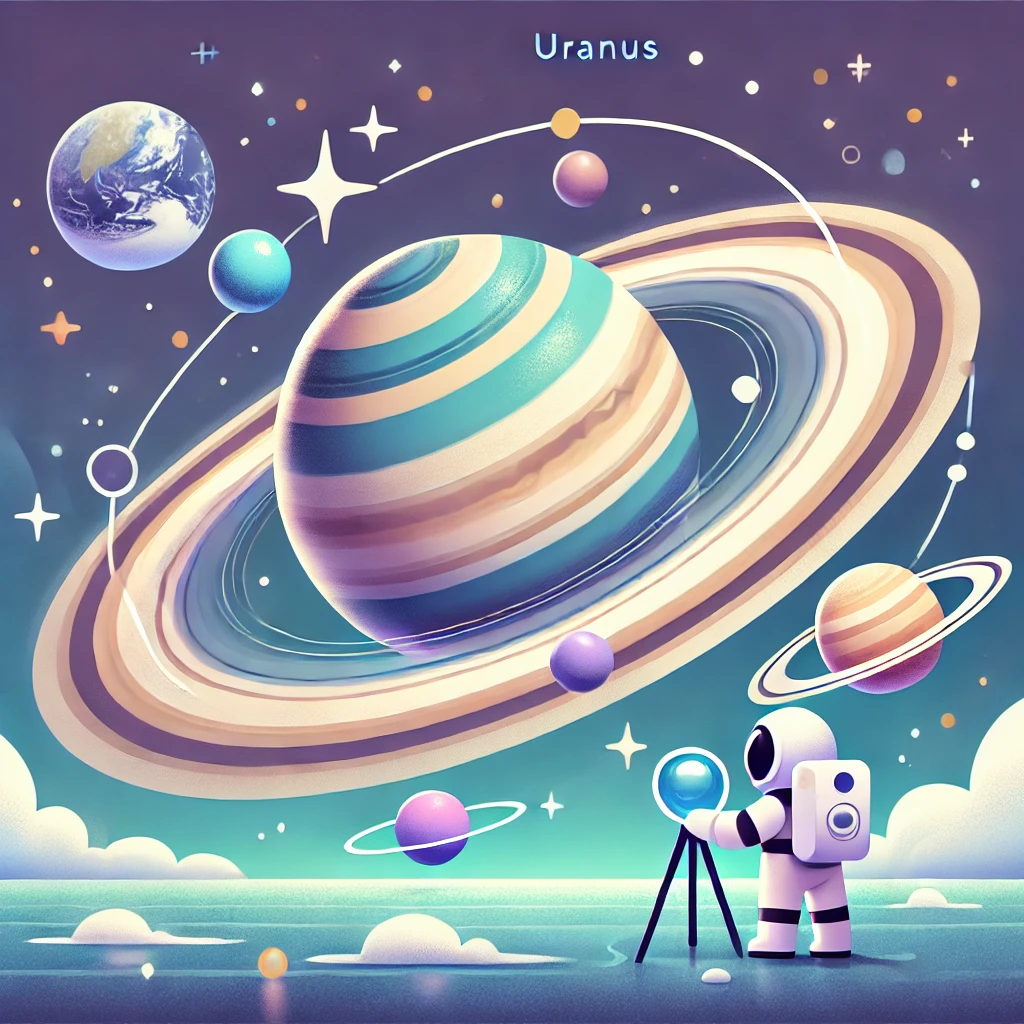
4. Uranus has 13 rings.
Uranus has a faint ring system with 13 rings.
The rings of Uranus are made of dark particles, ice, and dust. The inner rings are thin and hard to see, while the outer rings are more colorful and brighter. Scientists believe these rings are remnants of moons that broke apart millions of years ago.
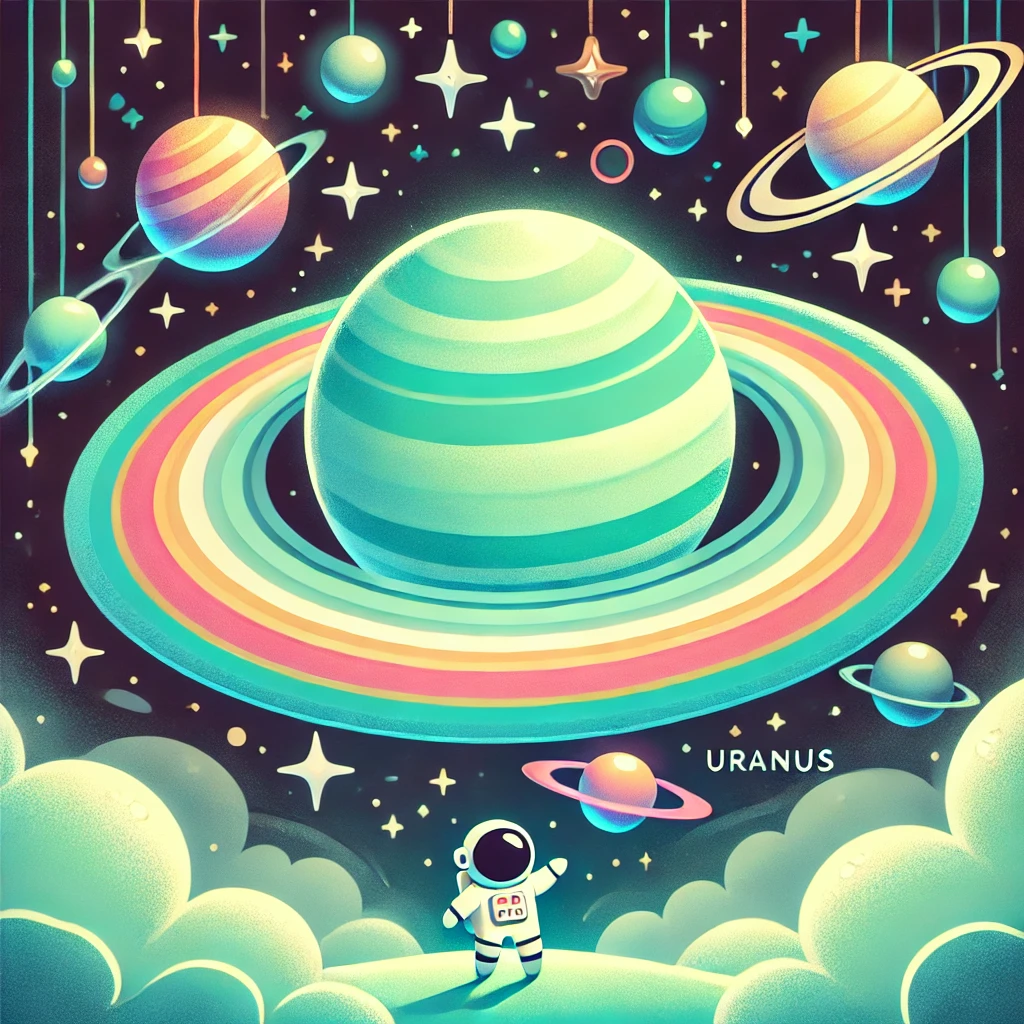
5. Uranus rains diamonds.
Scientists think Uranus rains diamonds!
The intense pressure inside Uranus compresses methane gas into diamond crystals. These diamonds may fall like rain toward Uranus’ rocky core, making Uranus a true gem in the Solar System.

6. A year on Uranus is 84 Earth years.
One Uranus year equals 84 Earth years.
Uranus is so far from the Sun that it takes 84 years to complete one orbit. If you were born on Uranus, you’d have to wait a lifetime just to celebrate your first birthday!

7. Uranus’ moons have literary names.
Uranus’ moons are named after characters from Shakespeare and Pope.
Unlike other planets with moons named after mythological gods, Uranus’ 27 moons are named after famous literary characters, like Titania, Oberon, Miranda, and Ariel. This gives Uranus a creative and cultural twist.

8. Uranus is blue-green due to methane.
The methane in Uranus’ atmosphere gives it a blue-green color.
Methane absorbs red light from the Sun and reflects blue and green light. This gives Uranus its distinct and stunning color, making Uranus one of the most beautiful planets in the Solar System.
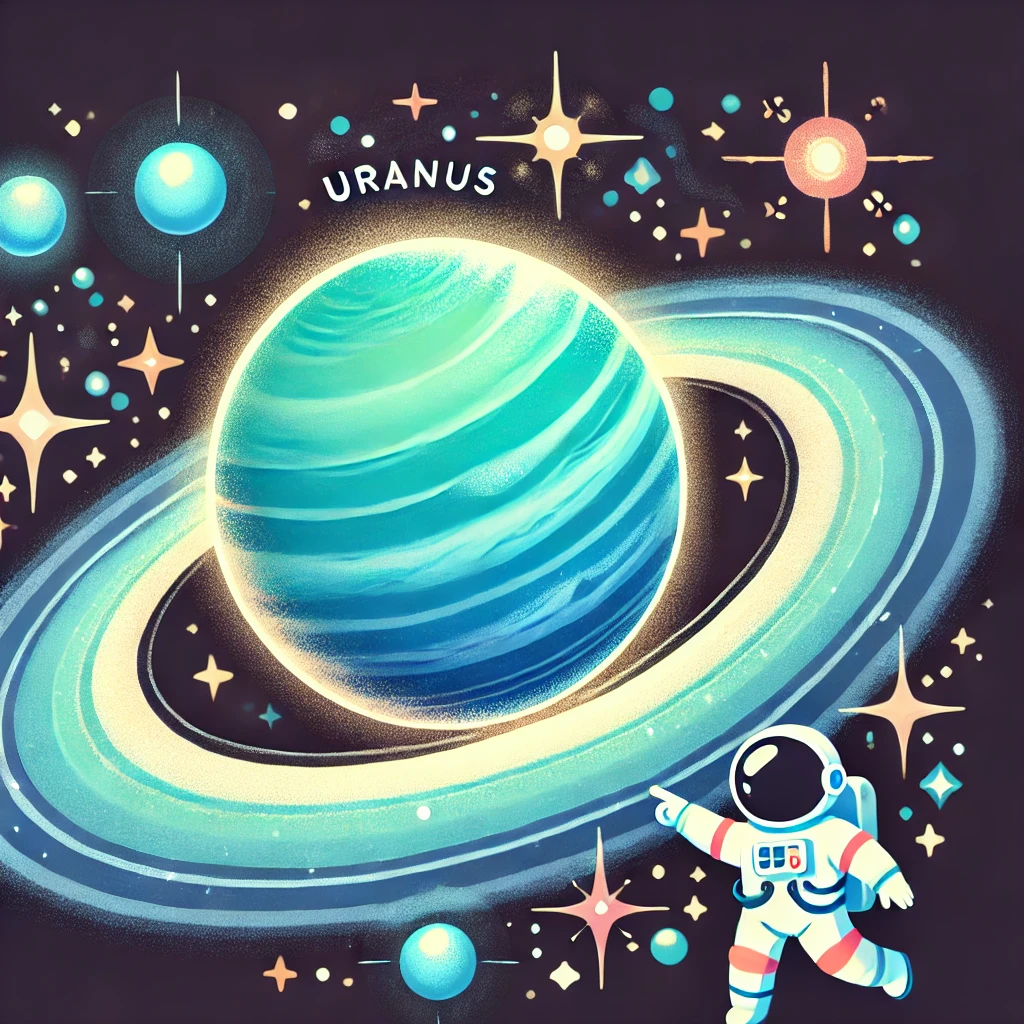
9. Uranus’ gravity is 91% of Earth’s.
Uranus’ gravity is slightly weaker than Earth’s.
If you weigh 100 pounds on Earth, you’d weigh 91 pounds on Uranus. Despite being much larger than Earth, Uranus is mostly made of gas and ice, which makes it less dense and gives it weaker gravity.
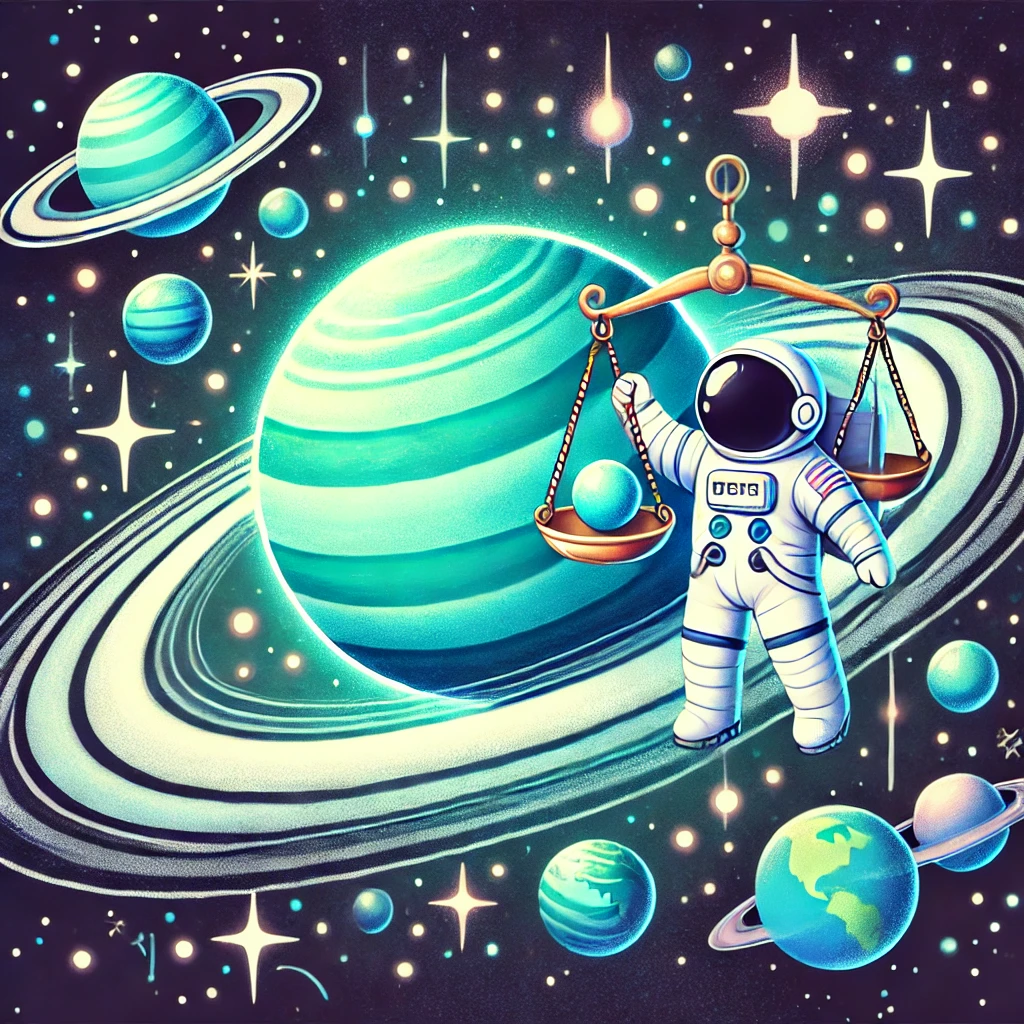
10. Uranus has extreme seasons.
Uranus experiences seasons that last over 20 years.
Because of Uranus’ unique tilt (98 degrees), its poles take turns pointing directly at the Sun during its orbit. This means one pole can experience 20+ years of continuous sunlight, while the other endures the same amount of darkness. These extreme seasons make Uranus one of the most unusual planets in the Solar System!

FAQs About Uranus Facts for Kids
What are 10 fun facts about Uranus?
1. Uranus is the coldest planet.
2. Uranus has extreme seasons.
3. Uranus emits almost no heat.
4. Uranus has a lopsided magnetic field.
5. Uranus might have an ocean beneath its atmosphere.
6. Uranus rotates backward like Venus.
7. Uranus’ rings were discovered by accident.
8. Uranus was almost named after King George III.
9. Uranus moves slowly across the sky.
10. You could fit 27 Earths side by side across Uranus.
What is Uranus for kids?
Uranus is a huge, icy planet far from the Sun. It’s special because it spins on its side and has a blue-green color.
Is Uranus cold or hot?
Uranus is cold—the coldest planet in the Solar System! Its average temperature is -357°F (-216°C).
What are 5 characteristics of Uranus?
1. It’s an ice giant.
2. It spins sideways.
3. It has 13 rings.
4. It’s blue-green.
5. It’s very cold.
Is Uranus bigger than Earth?
Yes! About 63 Earths could fit inside Uranus.
Is there oxygen on Uranus?
No, its atmosphere is made of methane, hydrogen, and helium.
Which planet has gold rain?
While Uranus rains diamonds, Venus might have sulfuric acid rain, and no planet rains gold—but that would be cool!


